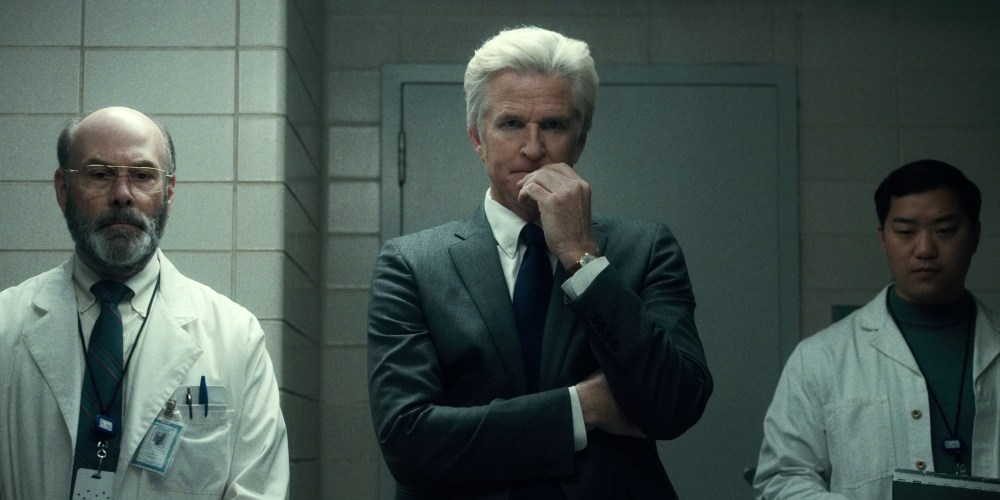“Explore how far Stranger Things conforms to genre with reference to Steve Neale’s theory of genre”
Stranger Things is a long-form drama set in 1980s small town America. It tells the story of a group of young boys, and when one of them goes missing, the search for him unravels a bizarre series of events which cause the local community to wonder what exactly has happened to their town. In many ways, Stranger Things does conform to the conventions of the genres it is affiliated with. It is largely a sci-fi series, so categorised by its featuring of aliens, characters with special powers, and authoritarian scientists. Additionally, it uses the idea of there being more than one “dimension” in existence; synthesised music to create an eerie-sounding accompaniment to the story; and it uses the setting of a laboratory, referencing Area 51 and reminding the audience of the sci-fi genre. Stranger Things is also associated with the genre of horror, which it fits with in its use of monsters, stereotypical teenage characters that get caught up in the action of the story, small town American setting, and the use of dark lighting typically used in horror films.

Steve Neale’s theory of genre states that genres are instances of repetition and difference. This means it is important for there to be commonly followed conventions, but also differences between products of the same kind, in order for them to remain interesting and to stand out from each other. Genre has evolved over time so that films or stories of a particular genre may also incorporate conventions associated with other types of films, for example an action film might include comedy. Stranger Things follows this theory as it does feature many of the conventions of both sci-fi and horror films, however it also uses new ideas that are not typically seen in other films or dramas. An example of this is how the main protagonists are pre-teen children rather than the older teenagers more often seen in horror films, and the 80s time setting when sci-fi stories are usually set in the far away future or past, whilst horror films are often modern to the time at which they are made. To have a series produced in the past couple of years that sets the story a few decades ago is unusual.

There are also other ways in which Stranger Things has subverted genre. Stranger Things subverts genre by defying the stereotypes surrounding the characters typically seen in sci-fi and horror. The 1980s “genre” is subverted by showing Joyce to have great concern for her children. In the 80s, parents generally let their children do what they wanted whilst they were more focused on other things; however Joyce seems to be paying more attention to her sons than anyone else. Nancy defies the horror stereotype of the teenage girl with the one-track mind. Whilst Nancy does care about popularity and Steve, she also learns to realise that there are more important things, such as saving her friend. Steve originally appears to be the stereotypical rude, popular jock character, but then later subverts this stereotype by admitting his mistakes and becoming more caring for the other characters, including those considered to be social “outcasts”. Eleven subverts the stereotype of the sci-fi alien character who serves the sole purpose of sending a human character on a journey. Whilst Eleven originally seems to just be a tool used to find Will, she is further through the story shown to have her own backstory and is very much her own person.

Sci-fi and horror stories are usually shown in the medium of films, whereas Stranger Things is a Netflix-produced long-form drama series. Todorov’s theory of narrative says that stories begin with equilibrium; once the equilibrium is disturbed a quest ensues to restore it, and the story moves to a climax until the equilibrium is finally restored. Stranger Things does begin with an equilibrium in which the citizens of Hawkins live in peace in their town with very little crime. This balance is disrupted when Will goes missing and the other characters start a quest to find him. Up until this point the story conforms to the narrative conventions of its genre, yet its being a long form drama means it does not reach a distinguishable climax or restored equilibrium. Whilst in a film the balance tends to be restored before the film ends, with a TV drama the story is spread over a long series of episodes which makes the audience wonder when the story will ever reach its resolution. It allows the producers of the show to introduce new twists and surprises each episode in order for the story to continue, and for the audience to retain interest. The form of production of Stranger Things is another part of what makes it a subversion of its genre.
A pleasing piece with a range of insightful comments. You show a really good understanding of the genres you discuss and the episode as well as the Neale’s theory. Well done.
HTI
Go further with reference to specific technical details from the episode such as camera, sound, location that link to genre
Refer specifically to representation
Refer to Hopper and Joyce
LikeLike
Target A- in this piece you are working at a B standard- which is good at this stage.
LikeLike